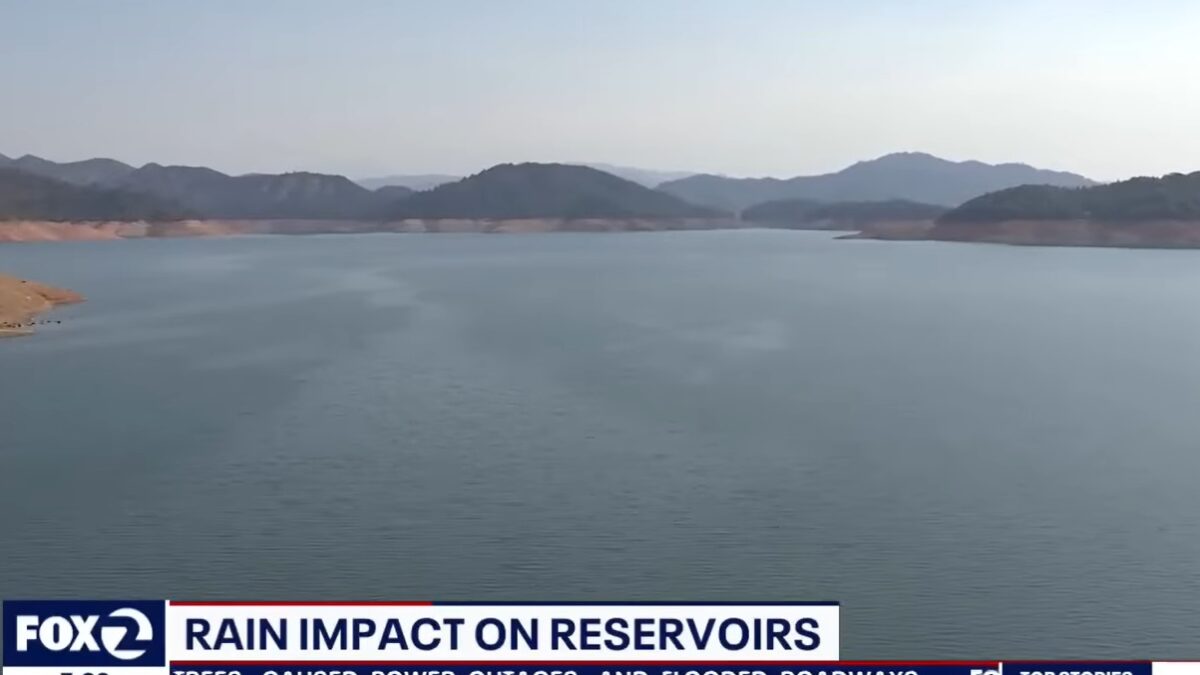
Tristan Justice reporting for The Federalist
Poseidon answered California’s prolonged drought crisis with a “bomb cyclone” pouring enough water over the state to temporarily replenish residents’ parched reservoirs.
The single cyclone on its own still doesn’t come close to accomplishing long-term alleviation of California’s seemingly chronic water shortage. An end to the drought would require years of above-average precipitation, even after snowstorms have padded the Sierra Nevada snowpack. But the record rainfall does offer short-term relief.
According to the U.S. Drought Monitor, California’s surface area that’s under drought conditions has dropped to just more than 71 percent since the storm hit, down from 85 percent a month ago. That number might be far lower had the state been adequately prepared to capture the gift from the sky.
California hasn’t built a new dam in four decades. An estimated more than 80 percent of the state’s winter rainwater is annually wasted. Most of this week’s precipitation is finding its way back to the Pacific, where environmentalists have blocked efforts to desalinate.
In August, Democrat Gov. Gavin Newsom feigned outrage over the state’s slow progress on water storage.
“The time to get these dam projects (like Sites Reservoir) is ridiculous, absurd and somewhat comedic,” Newsom said in Sacramento.
If the Sites Reservoir, which is located west of the Sacramento Valley and has been in the planning process for more than 60 years, had been finished, the location would store excess flow from the Sacramento River.
Michael Shellenberger, who mounted an independent challenge for governor last year and is the founder of Public, a Substack publication, faulted Newsom for slow progress on state water storage. Newsom, Shellenberger said, remains captive to radical environmental activists who protest any and all development, and has only jumped on the issue recently over pressure from the drought.
“Gavin has been in the grip of pro-scarcity Malthusian environmentalists his entire career,” Shellenberger explained. “He hasn’t done what he’s needed to do to raise the heights of the reservoirs we have or build the new reservoirs we need.”
Prolonged drought periods that sometimes last up to 200 years are common in the American West, which, according to 2020 Census figures, is now home to nearly 79 million people.
“Water, it’s the dumbest thing in the world,” Shellenberger said. “It’s easy to store water, just dig a bigger hole, build higher walls.”
California’s slow reactive measures to manage the state’s water crisis, however, gave way to a missed opportunity. State leaders could have used the natural disaster to acquire a desperately needed natural resource, but instead, with the storm knocking out power for hundreds of thousands of residents and reportedly leading to at least 17 deaths, their failures ensured the weather event would be a net loss.
